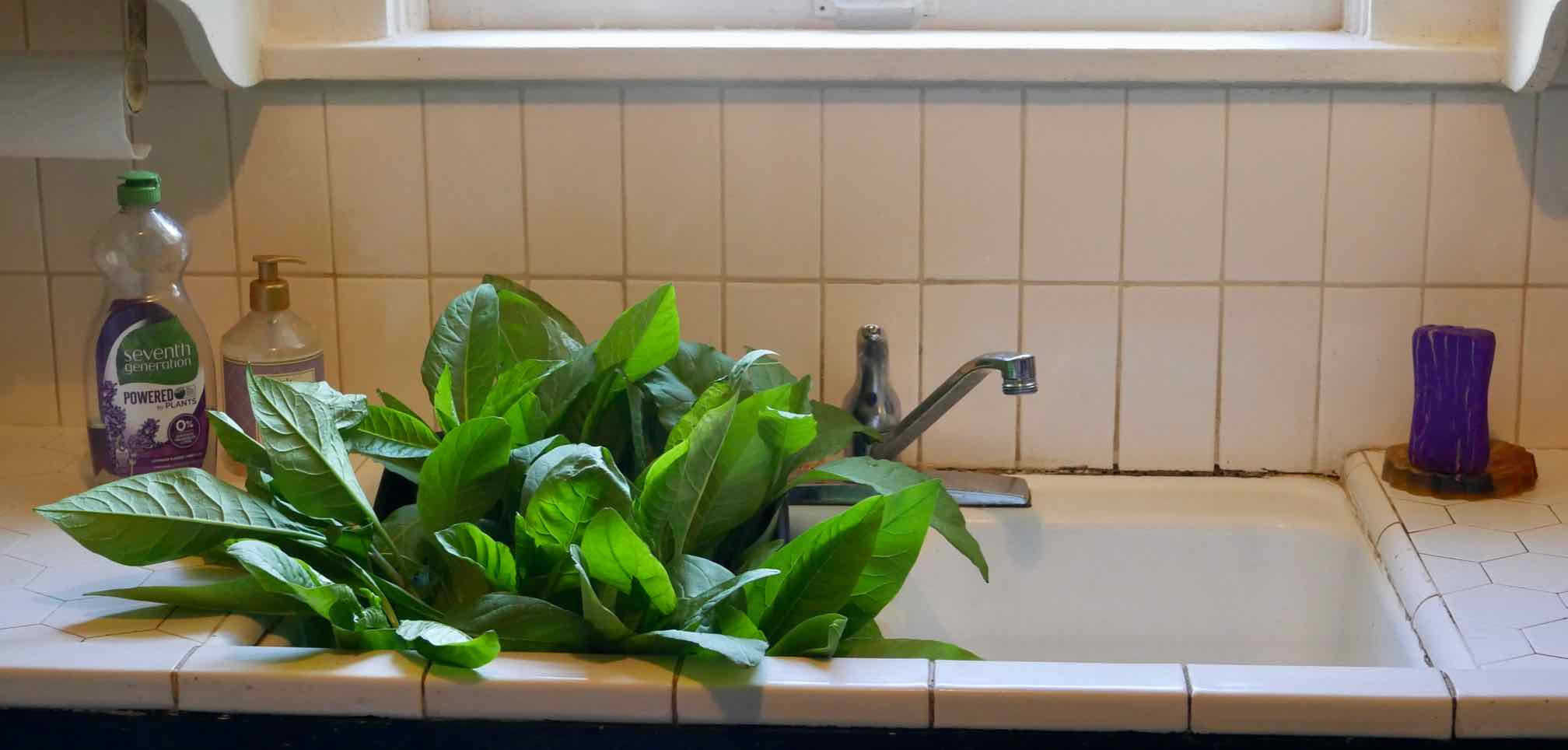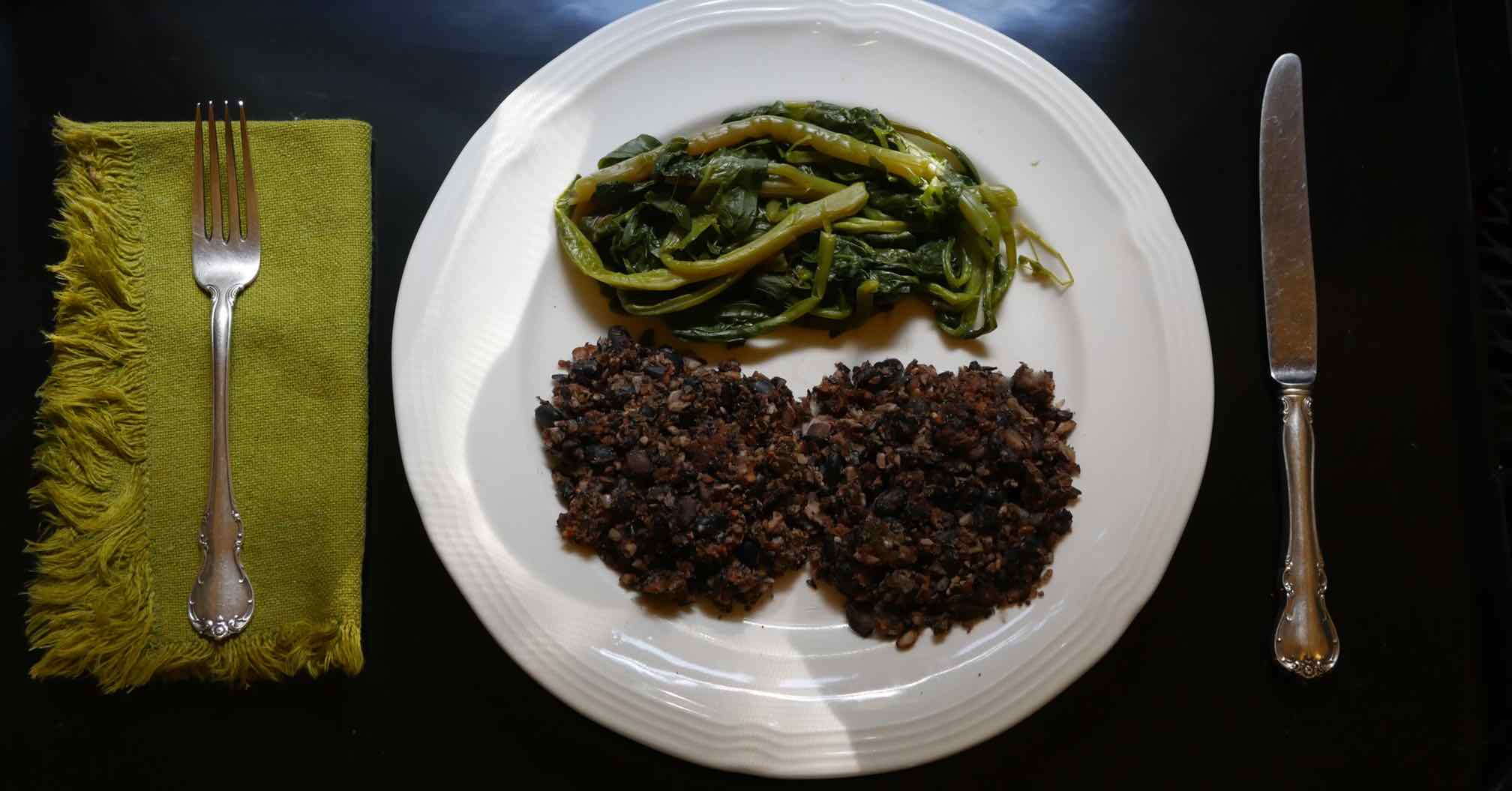annebarone.com
French Chic & Slim
Nouvelles
News and Opinion from Anne Barone to Keep You Chic & Slim

image: poke in Anne's sink ready for washing
|| 20 April 2020
Poke: Spring Substitute for Asparagus
The last day I went food shopping was 10 March. My supermarket-purchased fresh vegetables ran out weeks ago. But I am enjoying poke from my garden.
This spring green has a variety of names: poke, pokeberry, pokeweed. Officially it is Phytolacca americana. You will often read that poke is poisonous. Poke is poisonous if you eat the wrong parts of the plant — or do not cook the edible parts in the proper manner. If poke were completely poisonous, as much poke I have eaten in the past two weeks, I would be dead. Or at least ill.
The history of the plant’s name has a French connection. The first Europeans in the part of the United States where I was born and grew up and where I now live were French fur hunters and trappers.
The French have long gathered and eaten wild greens in the spring. Springtime, these early French hunters found a wild green growing along the creek banks. They would pull up the young plants and stuff them into their coat pockets and take them back to camp for cooking. Since the greens did not resemble any they knew in France, these French hunters christened them poche sale or poche saleté (history is murky here).
Poche is pocket and sale is dirty, saleté is dirtiness or grubbines. The name that translates dirty pocket was inspired by the soil clinging to the plants that dirtied the French hunters’ coat pockets.
The French names, poche sale or poche saleté, were later corrupted into English as poke salad, the common name still used today for the dish cooked with poke in the southern USA.
Poke salad as it is traditionally cooked requires that you cut the young plants (8 to 12 inches high) at ground level. (Don’t mess with the roots. The roots are poisonous.)
Wash these stems with leaves attached. Put them in a big pot and cover with water, bring to boil, boil 10 minutes. Drain throughly. Cover again with fresh water. Bring to boil and boil again for 10 minutes. Drain throughly again. (Some people do a third 10-minute boil followed by a drain. But I do only two.)
In a big skillet large enough to accomodate all the cooked poke, fry 6 to 10 strips of bacon. When the bacon is crisp, remove it from the pan and put it aside. Add the cooked and well-drained poke to the bacon drippings and heat gently until the poke is well-seasoned with the bacon drippings. To serve, crumble the crisp bacon over the poke. Serve with cornbread hot from the oven. Tasty. But all that bacon fat might be a bit hard on the arteries.
Since the cooked poke stems taste so much like asparagus, I prefer to skip the bacon and eat my poke as I do fresh asparagus: seasoned with a little butter, a squeeze of lemon juice and a sprinkling of sea salt. The poke makes a nice accompaniment to roasted chicken or a grilled cheese sandwich. The photo below is my supper yesterday in which I ate my poke with black bean croquettes.

be chic, stay slim — Anne Barone